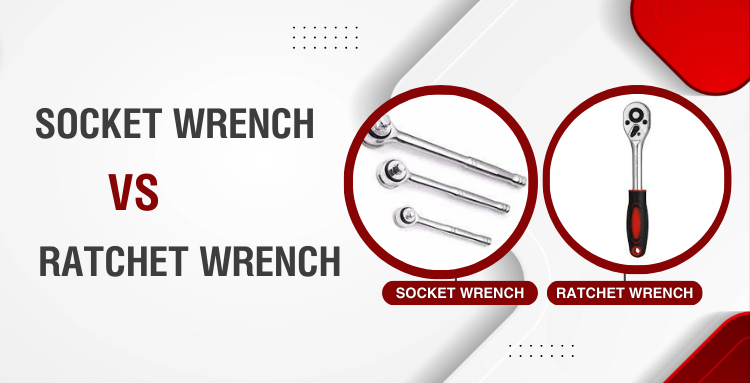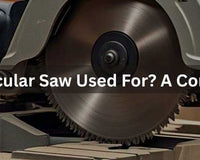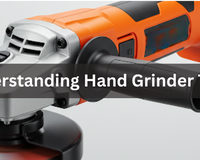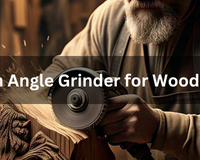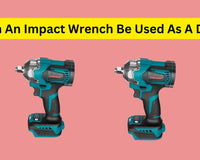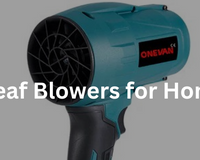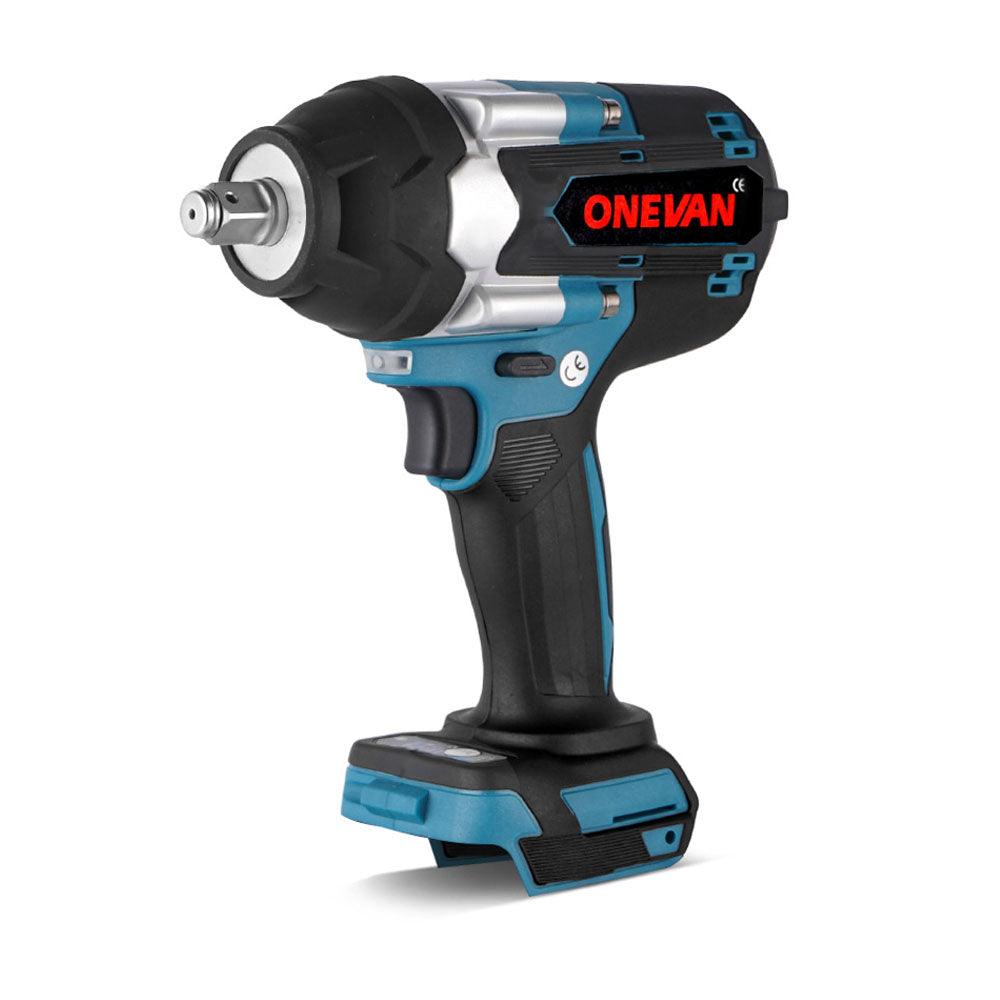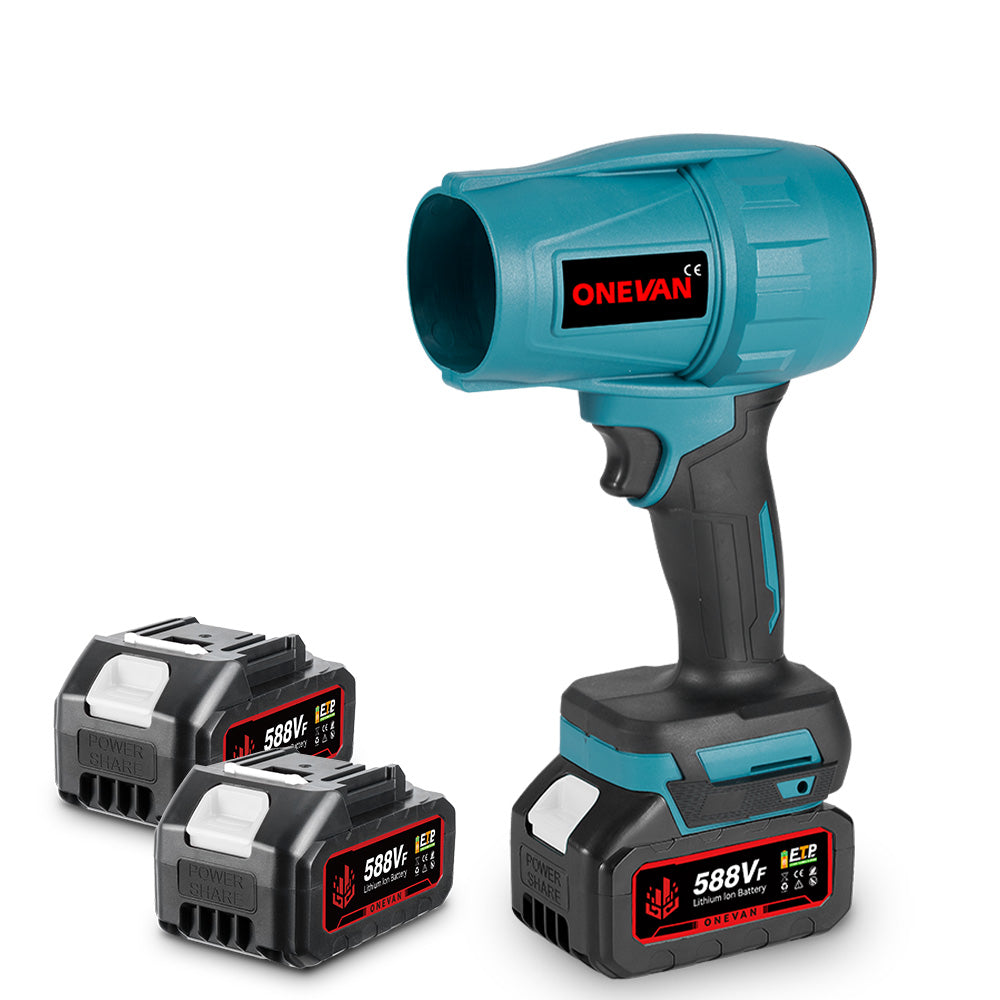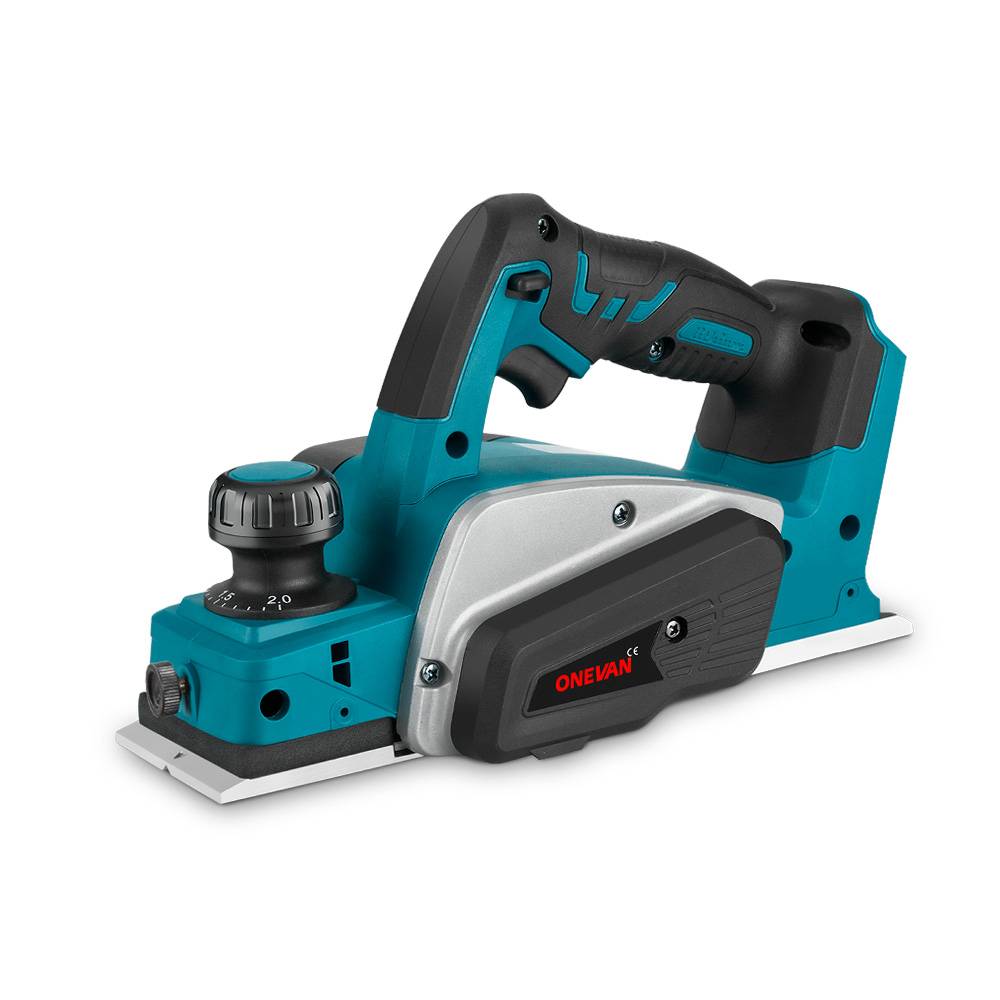Choosing Between Socket and Ratchet Wrenches
Socket and ratchet wrenches perform well but they have different application scenarios. However, if you are a beginner and want to take maximum performance from both tools, understanding their basic differences is equally important.
Knowing when to reach for which tool will protect you from time wasting, frustration, and unlimited visits to the tool replacement shops.
With long handles, socket wrenches come in handy when dealing with stubborn bolts with high resistance. However, their performance in tight spaces can be miserable. Ratchet wrenches solve this problem by giving short bursts without moving the tool. These wrenches are perfect for squeezing into cramped spots.
1. What is a Socket Wrench?
Just think for a moment, you are trying to open some stubborn nut but it’s not moving a bit. To avoid this frustration, socket wrenches solve these issues in seconds. A socket wrench comprises a handle and a socket. The handle is a long metal bar. The longer the handle, the more turning power you get. Similarly, the socket is a detachable head. It comes in different sizes.
1.1 How Does a Socket Wrench Work?
The socket wrench has an intelligent design. It tights and loosens fasteners with the handle and the socket. By applying leverage, the operator can effortlessly execute the toughest tasks. Some handles boast a knurled grip and a textured surface that enhances user comfort and control. It is quite effective when you are working in greasy or oily environments.
Each socket has a specific shape, most commonly hexagonal. It is to fit the heads of standard nuts and bolts. Notably, there are also typical sockets which are designed for:
- Torx screws
- Spline drives
- Fastener variations.
If you want to use the socket wrench, choose the socket that corresponds to the size and shape of the fastener.
The socket's secure connection to the handle which hinges on a locking mechanism. When the socket is pushed onto the square-shaped drive tang, a detent pin within the drive engages a corresponding hole in the socket with a quick click. It ensures the socket remains securely attached under pressure. Hence, it prevents slippage that could damage the fastener or cause injury.
1.2 The Size of the Socket Wrench

Socket wrenches come in various sizes for different uses. We have given a general measurement system including size range and application.
Socket Wrench Size Guide
| Measurement System | Size Range | Typical Use |
| Metric (mm) | 5mm and below | Precision work on electronics or small projects |
| Metric (mm) | 10mm, 12mm, 13mm, 14mm, 15mm, 17mm | Automotive and general mechanical work |
| Metric (mm) | 19mm, 21mm, 24mm and above | Heavy machinery and engineering jobs |
| SAE (inches) | 1/4", 5/16", 3/8" | Precision work and light-duty applications |
| SAE (inches) | 1/2", 9/16", 5/8", 3/4" | Various automotive repairs |
| SAE (inches) | 7/8", 1", 1-1/16" and above | Heavy-duty applications requiring high-torque |
| Drive Size (inches) | 1/4 inch | Precision and light-duty work |
| Drive Size (inches) | 3/8 inch | The most common size, suitable for general tasks |
| Drive Size (inches) | 1/2 inch | Heavy-duty work requiring more torque |
| Drive Size (inches) | 3/4 inch and 1 inch | Industrial-grade and heavy-duty applications require very high torque |
1.3 The Shapes of Socket Wrench
There are various shapes of socket wrenches apart from the standard ones. When choosing, pick the one that will fit tightly on the fastener and prevent any damage:
- Six-Point Sockets (Hex Sockets): You can say these are one of the most commonly used sockets. Such sockets feature six-sided walls. Subsequently, they fit hexagonal nuts and bolt heads.
- Twelve-Point Sockets (Double Hex Sockets): These sockets also work with hexagonal fasteners. However, they have twelve contact points instead of six.
- Torx (Star) Sockets: Purely designed for fasteners with a star-shaped head. It is commonly found on tamper-proof screws.
- Impact Sockets: These heavy-duty sockets are specifically designed to be used with impact wrenches.
- Deep Sockets: Deep sockets come with a cavity compared to standard sockets.
- Pass-Through Sockets (Hollow Sockets): These sockets have a hollow center that allows long threaded rods or other objects to pass through.
1.4 The limitations of Socket Wrenches
Socket wrenches have a few restrictions. In tight spaces, the right placement of the socket and its turning handle might not work smoothly. Moreover, obstacles might also prevent the user from positioning the tool’s socket orthogonally to the bolt. Also, every set of sockets and ratchet has some torque limit; going above can be damaging.
1.5 Advantages of Socket Wrench
Socket wrenches have a diverse range of benefits over traditional wrenches. We shall discuss some of the most prominent advantages here.
- Torque: The long handle of a socket wrench is a kind of lever. It amplifies the force. In return, we get a significant torque.
- Versatility: With interchangeable sockets, a single socket wrench can effectively tackle an extensive range of fastener sizes and shapes.
- Efficiency: The easy grip of the socket and smooth turning of the handle make socket wrenches much faster and more efficient than traditional wrenches.
- Reachability: Deep sockets allow you to reach nuts and bolts that are recessed or have long threaded rods. It makes them ideal for working in tight spaces.
- Precision: The snug fit reduces the risk of slipping off the fastener head. Ultimately, it ensures high precision.
- Leverage: You have read earlier that a long handle delivers significant leverage. It allows force expansion with less effort.
1.6 Applications of Socket Wrench
Automotive Repairs: Socket wrenches are very necessary for any motorcar repair kit because spark plugs have to be changed and lug nuts must be removed. They make it possible for one to reach fasteners situated in engine compartments that are narrow and enable you to tighten.
Machinery Maintenance: Whether you are working on lawnmowers, industrial machines, or bicycles, socket wrenches can help you tighten and loosen bolts of varied sizes and shapes.
Construction: Socket wrenches prove useful in various construction tasks ranging from deck building to cabinet installation. It helps tighten nuts and bolts in framing, electrical parts, and plumbing fixtures as well.
DIY Projects: While putting together furniture or fixing shelves, socket wrenches would come in handy. They are used for quickly attaching or separating screws.
Electronics: For some electronics, use special tools but others may require repairs or modifications. It includes tiny screws or nuts.
2. What is a Ratchet Wrench?
A ratcheting wrench is a great upgrade from an ordinary socket wrench. It incorporates all the advantages of the traditional type – long levers for leverage and multiple sockets for various bolt sizes and shapes.
2.1 What Does a Ratchet Wrench Work?

The ratchet mechanism is what makes this tool distinctive. This smart gear arrangement allows you to turn the socket in one direction (often clockwise to fasten) while staying connected with the fastener.
However, moving the handle in reverse (counterclockwise to loosen) disengages the mechanism. Hence, it can move freely without affecting what happens at the socket end. Such back-and-forth movement renders unnecessary transferring or changing the position of the wrench.
The merits of a ratchet wrench are many. The chief benefit is speed; you can quickly tighten or loosen bolts without taking time out to remove and re-position your wench again. This results in more productive work especially when working with small areas. Additionally, it also reduces risks associated with slipping as well as damage on screw heads because of having a secure fit socket and controlled twisting motion.
You can buy an entire set of wrenches if you are a professional mechanic dealing day to day tough jobs. However, if you had to choose just one wrench it would definitely depend on your requirements. You should consider the best value and performance. Below, you will read which the best wrench to do a specific job.
- Regular Ratchet Wrench: This ratchet wrench features a fixed head and a long handle for optimal leverage.
- Flex-Head Wrenches: This innovative design incorporates a head that can articulate at an angle, proving invaluable when working within tight spaces or difficult angles.
- Extendable Ratchet Wrench: These ratchet wrenches are quite helpful in narrow spaces. this ingenious wrench features a handle that extends for additional reach.
- Adjustable Ratchet Wrenches: It is an amazing tool that does multiple tasks. By adjusting its opening width, it can adapt to various nut and bolt sizes. Hence, makes it ideal for projects requiring work with diverse fasteners.
- Bit Ratchet Wrenches: Instead of utilizing sockets, this type of ratchet wrench employs interchangeable bits. It has multiple interchangeable tips. For instance, stars, squares, or flatheads for screws.
- Battery-Powered Ratchet Wrench: Handling stubborn fasteners requires optimum torque..
- Pneumatic Ratchet Wrenches: Pneumatic wrenches leverage compressed air to deliver even greater torque. Hence, this is an ideal tool for professional duties.
- Socket Wrenches with Ratcheting Handle: This wrench combines a standard socket wrench with an integrated ratchet mechanism.
- Fixed or Swappable Head Ratchet Wrench: Some ratchets have permanently attached heads. However, others offer the flexibility of swapping out different-sized sockets based on the project requirements. Therefore, it is essential to consider your requirements first.
2.2 The Types of Ratchet Wrench

This simple ratchet wrench has a diverse range of parts. Each part is designed to tackle unique fastening challenges. Understanding its types will assist you in selecting the most suitable tool to meet individual needs.
Standard Ratchet Wrench:
This is the quintessential ratchet wrench. It features a fixed head with a long handle.
Flex-Head Ratchet Wrench:
It has an innovative design. Flex-Head Ratchet Wrench incorporates a head that can articulate at an angle. This proves to be invaluable when working within confined spaces.
Telescoping or Extendable Ratchet Wrench:
This is good for tasks that require access to fasteners in deep, narrow locations. It features a handle that extends for additional reach.
Adjustable Ratchet Wrench:
Since it is an adjustable all-rounder ratchet wrench, it can adapt to various nut and bolt sizes. This feature makes this wrench ideal for projects requiring work with diverse fasteners.
Bit Ratchet Wrench:
Instead of utilizing sockets, this type of ratchet wrench incorporates interchangeable bits. This is quite an effective tool for tightening screws or driving specialized fasteners.
Electric or Battery-Powered Ratchet Wrench:
These tools are particularly built for stubborn fasteners that require significant torque. You can effectively expedite the tightening and loosening work.
Pneumatic Ratchet Wrench:
It has a similar concept to the electric version. Pneumatic ratchet wrenches utilize compressed air to deliver higher torque.
Socket Wrench with Ratcheting Handle:
It combines the qualities of both standard socket wrenches with an integrated ratchet mechanism.
Fixed or Swappable Head Ratchet Wrench:
Some ratchets have a permanently attached head. Similarly, swappable-sized sockets are based on the project requirements.
2.3 The Sizes of Ratchet Wrench
| Drive Size (inches) | Typical Use | Socket Size Range (millimeters) | Socket Size Range (inches) | Torque Rating |
| 1/4 inch | Precision work (electronics, small projects) | 4mm - 13mm | 3/16" - 1/2" | Low (example: ideal for delicate tasks on electronics) |
| 3/8 inch | The most common size, suitable for general tasks (furniture assembly, automotive repairs) | 7mm - 19mm | 1/4" - 3/4" | Medium (example: suitable for most automotive repairs) |
| 1/2 inch | Heavy-duty work requiring more torque (car maintenance, construction) | 10mm - 24mm | 3/8" - 1" | High (example: good for lug nuts and stubborn bolts) |
| 3/4 inch and 1 inch | Industrial-grade and heavy-duty applications requiring very high torque (large machinery, equipment) | 22mm and up | 7/8" and up | Very High (example: used for heavy equipment maintenance) |
2.4 The limitations of Ratchet Wrench
Ratchet wrenches are highly adaptable tools, although some limitations must always be kept in mind. Here is the breakdown of some key limitations:
Torque Limit:Every individual ratchet wrench has a maximum torque capacity as does the socket. Failure to meet this limit could result in damage to the wrench itself, the socket, or even the fastener. For instance, for stubborn tasks that demand high torque, it is best to utilize breaker bars or impact wrenches.
Space Constraints:
The basic design of a ratchet wrench can make it challenging to use in tight spaces. The length of the handle and bulkiness of the socket head might hinder its maneuverability. In places with limited clearance like stubby wrenches, right-angle attachments or other specialized tools constructed for restricted regions may be used instead.
Fixed Sizes:
A few ratchets have exchangeable heads which allow them to accommodate different sized sockets unlike others fixed at one size only and they entirely depend on that specific size socket. When you should work with varying sizes of fasteners on your project, an adjustable wrench or a set with many sockets could be more useful.
Non-Continuous Rotation:
While the ratchet mechanism allows for quick tightening and loosening by moving back and forth; it is not ideal for applications needing continuous rotation. Hence, when threading a screw or nut over longer distances; it would be appropriate to employ traditional spanners rather than those characterized by back-and-forth motion.
Risk of Stripping:
Improper fit between the socket and fastener results in higher chances of stripping off the head during application excessive force may also lead to such a phenomenon occurring By so doing, this worsens matters by making future removals difficult. This risk can be mitigated by using correct socket sizes alongside applying controlled forces.
2.5 The Advantages of Ratchet Wrench
- Tight Spaces Uses
- One Handle, Many Sizes
- Leverage for Less Effort
- Built to Last
- Ergonomic Comfort
2.6 The Applications of Ratchet Wrench
- Automotive Repairs
- Construction Projects
- Aerospace Industry
- Manufacturing Lines
- Home Appliance Repair
- Furniture Assembly
- Bicycle Maintenance
- Plumbing
- Electrical Installations
- DIY Projects
3. Key Differences Between Socket and Ratchet Wrenches
Both socket wrenches and ratchet wrenches have specific features which help in certain situations. Mostly, people consider both the same power tools. However, they have some key differences that we shall mention below.
3.1 The Differences in design and mode of operation
Socket Wrenches
Traditional socket wrenches need to be removed and repositioned after every turn in cases where there is not enough room for a full rotation.
The Application of Torque: This feature allows torque to be applied at very high rates due to the leverage created by their long handles.
Fixed Drive: It is the square-shaped drive connection that is fixed while the socket revolves around the fastener as you twist its handle.
Socket Depth Options: Socket wrenches have different depths; deep and shallow. Deep sockets are used for bolts with long threads, whereas shallow ones are for average applications.
Ratchet Wrenches
Ratchet Mechanism: This brilliant mechanism has a gear and pawl arrangement where a fastener can be turned in one direction (tightening or loosening) while remaining engaged. Afterwards, the handle can move freely in the opposite direction without disturbing the socket’s position on a fastener which makes it unnecessary to continuously remove and refasten the wrench particularly when operating in confined areas.
Directional Lever: In many ratchets, there is a small lever or dial that controls the turning direction of a socket (tightening or loosening).
Efficiency: Standard wrenches usually require lifting off between turns, unlike this type of tools making them much more effective in confined spaces through ratcheting action.
Head Shape: Ratchets are available as teardrop or round head shapes with slight variations in clearance profiles that may be more appropriate for certain working conditions.
Quick-Release Button: Some ratchets come with this attribute to enable quick changes of sockets.
Tooth Count: Depending on the type of ratchet its teeth may vary with fine-toothed varieties giving way to smaller swing arcs thus suitable for tight spaces.
3.2 The Differences between torque transmission and efficiency
Socket WrenchesTorque Transmission:
This is about how much turning power applied to the handle can be transferred to the fastener (bolt or nut) that is being loosened or tightened. These socket wrenches are excellent in this aspect due to their sheer simplicity:
Direct Drive:
The socket connects directly to the handle, which allows force to be transmitted without loss through the system. There is no intricate mechanism in between that can soak up or dilute this force.
Leverage Advantage:
A longer handle acts as a lever, amplifying your applied force with mechanical advantage. The more lengthened the lever bar, the more torque you can produce.
Efficiency:
In terms of socket wrenches, this word has two meanings:
Motion Efficiency:This term means how many times you have to move it before finishing a job faster than ratcheting socket wrenches. Non-ratcheting sockets tend to be less efficient in motion when compared with ratchet ones since one will have to raise and reposition the socket every time after that turn particularly if there is not enough space for full rotation of it and such processes may end up consuming much of your time and energy.
Energy Transfer Efficiency: This term refers to the minimal loss of power when force is applied, as the energy is directly transferred to the fastener with a non-ratcheting socket wrench.. In these cases, non-ratcheting socket wrenches excel because they don’t have such problems as internal friction caused by gears like those found in ratchet wrenches. What comes out here is that most of your hand’s energy goes directly from your hand and then down onto a bolt by using these tools, unlike others.
Torque Transmission:
To transfer the power you put into the handle efficiently to the fastener, here is how the mechanics of a ratchet wrench do it.
Inside Mechanism:
Unlike non-ratcheting socket wrenches that directly drive nuts or bolts, ratchet wrenches have an internal mechanism that includes gears and a pawl. However, this feature could slightly hinder movement by increasing friction between moving parts. In addition, this may slightly decrease the overall efficiency of torque transmission as compared to direct drive socket wrenches.
Efficiency:
Despite some loss in power transmission, ratchet wrenches are better suited for another aspect of efficiency - motion efficiency. One measure of this is how many moves it takes to complete a task:
Speed in Tight Spaces:
This is where the ratcheting mechanism shows its value. Instead of taking off and refitting every turn, one just needs to flick back and forth with the handle. It eliminates any unnecessary movements and makes tightening/loosening fasteners much faster in cramped areas.
Fine-Tooth Advantage
“Tooth counts” vary on these tools – numbers given refer to teeth on gear that engages the process. Generally, fine-toothed types have more teeth thereby demanding a smaller minimum turning angle; hence they can turn screws in tighter spaces where other ratchets cannot make even a full revolution.
3.3 The Differences in versatility and range of use
| Features (versatile) | Socket Wrenches | Ratchet Wrenches |
| Ratcheting | Limited - No built-in ratcheting mechanism | High - The ratcheting mechanism allows use in tight spaces |
| Sockets | High - Can use various sockets (deep, impact, standard) | High - Can use various sockets (including specialty types) |
| Attachments | Moderate - Commonly used with sockets but can also be used with certain adapters and extensions. | High - Can be used with extensions, universals, adapters |
| Direction | Requires repositioning for tightening/loosening | Easy switching between tightening/loosening (direction lever) |
| Space | Ideal for easily accessible fasteners, full rotation needed | Excellent for tight spaces, confined areas, limited rotation |
| Extensions | Limited - Handle length determines the reach | Broad - Extensions increase reach for deep-set fasteners |
3.4 The Differences between portability and durability
| Feature | Socket Wrenches | Ratchet Wrenches |
| Portability (Physical) | Can be quite portable in a compact case | Generally more compact due to smaller size |
| Portability (Usability) | May be limited in tight spaces due to the full rotation need | Excellent for tight spaces, usable with limited rotation |
| Durability (Construction) | Simpler design with fewer moving parts | More complex with an internal ratcheting mechanism |
| Durability (Material) | Sockets made from hardened steel for strength | Sockets are typically made from hardened steel |
| Durability (Mechanism) | Less prone to wear and tear | The ratcheting mechanism susceptible to wear over time |
| Durability (Maintenance) | Requires minimal maintenance | Requires regular cleaning and lubrication for optimal function |
4. Selecting the Right Wrench for Your Task

A wrench is considered one of the most important tools in the toolbox. Since wrenches have several features, it is important to know which works best for a particular situation.
4.1 When to Opt for a Socket Wrench and Not for a Ratchet Wrench?
When you are selecting a wrench, keep in mind the specific needs of your project. The use of either a long-handled socket wrench or a breaker bar will provide enough leverage in high-torque situations. If one can rotate fully, an ordinary socket wrench may be effective. However, you need to take cost into account as well – ratchet wrenches are usually more expensive than socket ones and some have fine-tooth mechanisms.
Yet for regular users, it’s not unreasonable to pay extra for additional functionality and better productivity that comes along with the ratchet option. Just think about how long they will last and how often they need servicing. Socket wrenches are very simple tools that require very little maintenance work on them. Ratchet handles are generally rugged but periodically need cleaning and lubricating to ensure their ratcheting mechanisms function smoothly.
4.2 When to Opt for a Ratchet Wrench and Not for a Socket Wrench?
Socket wrenches and ratchet wrenches have a common goal – tightens and loosens fasteners, but ratcheting wrenches are superior in many key areas. In places where using a standard socket wrench cannot go through a full cycle of rotation because of space constraints, the ratchet mechanism will enable you to work smartly without constantly removing and refitting your tool.
In other words, using a ratchet wrench when working on projects that involve numerous fasteners or repetitive movements reduces work time by eliminating fatigue caused when repositioning an ordinary wrench after a single turn.
5. Maintenance and Care for Socket and Ratchet Wrenches
Your socket and ratchet wrenches are essential in the toolbox. Like any other machine, these tools also need maintenance and regular care for better performance.
5.1 Tips for cleaning and storage
Cleaning- Wipe Down After Use
- Use Appropriate Cleaners
- Dry Thoroughly
- Oil Moving Parts
- Address Rust Promptly
- Toolbox or Tool Chest
- Organizers and Holders
- Avoid Moisture
- Hang Them Up
- Protective Coatings
- Regular Checks
5.2 Troubleshooting common issues and repairs
With socket wrench use, the most common issue is the improper fitting of the socket to the fastener. If the fastener socket keeps slipping off, it may be of the wrong size. Ensure that you have the right size and that it is tight against the fastener. Similarly, a worn-out socket may also be a cause – think of changing it if it no longer securely grips onto screws or bolts. In addition, confirm that square-shaped connection points called drive sizes (drives) on both socket and wrench are compatible in case the socket does not fit at all into the ratchet wrench. Most widely used types of wrenches typically have either 1/4-inch, 3/8-inch, or 1/2-inch drives hence make sure they match.
Also complicating things are ratchet wrenches. The mechanism does not work properly when debris is caught between its teeth or gears. Many times just blowing them out with compressed air or brushing them gently can take away any debris that makes them jam during use as expected. On occasion, one might be required to pay more attention if experiencing a stiff or seized ratchet. This involves disassembling the wrench (check with your manufacturer’s manual if unsure.
5.3 How to lifespan of your tools?
Follow these simple practices to maximize the life of your tools: give priority to proper use to prevent damage and clean them after every usage. In the case of ratchet wrenches, apply oil regularly for smooth action. The secret behind this is proper storage; select a cool place that keeps them from knocking around and breaking. Lastly, don’t fear to mend or exchange damaged parts – purchasing new ones may be worth it if you want to enjoy your best tools for a long time.
6. Conclusion
Summarizing the entire topic; the wrenches have an in-depth range of types. We discussed the difference between a socket wrench and a ratchet wrench. By understanding the unique features of both, you can conveniently undertake the best wrench for you.
7. FAQ
1. Is a socket wrench the same as a ratchet?
No, a socket wrench and a ratchet are not the same because both have different mechanisms.
2. Why use a ratchet instead of a wrench?
Ratchets are well suited for confined spaces where it is not possible to make a full turn using the standard type of spanner that you have. The ratchet mechanism allows you to work effectively without removing and replacing the tool continuously.
3. What is a socket wrench and how is it used with a ratchet?
A socket wrench is a device that is used to provide torque or the turning force on a fastener such as nuts or bolts by using a socket. The socket fits over the head of the fastener and the handle of the wrench is used in turning it.
4. How is a socket attached to a ratchet?
The socket is pressed onto the drive tang of the ratchet. The square-shaped drive of the socket perfectly interlocks with the square that is matching on the ratchet. There is a spring mechanism containing detent balls in the ratchet head to keep it secure.
5. Is a socket wrench the same as a wrench?
No, a socket wrench is a specific type of wrench. It has an interchangeable socket design. A standard wrench, on the other hand, has a fixed head size.
6. What type of wrench is similar to a socket?
An adjustable wrench is like a socket wrench in that an adjustable wrench can be adjusted to fit various sizes of fasteners. However, a socket wrench uses interchangeable sockets for a perfect fit while an adjustable wrench depends on just one head that may not hold the fastener correctly at all times.
7. Which way do you turn a socket wrench to loosen?
Usually, turning the handle of the socket wrench (or ratchet wrench if one is attached) in an anti-clockwise direction will make it loose.
8. How do you loosen a tight socket?
There are a few tricks we can try to fix these issues:
- Apply leverage
- Penetrating oil
- Tap it gently
9. Can I use pliers instead of a socket wrench?
Using pliers as an alternative instead of the socket wrench is not good advice. The fastener head can be damaged by the pliers if they are used inappropriately, and sometimes there might not be enough grip to generate the required torque.
10. What can I use if I don't have a socket wrench?
You may be lucky enough to use an adjustable wrench in case the fastener size is common and you don’t have a socket wrench. However, one has to be careful with it since it may not fit properly and can damage the fastener head. The best thing is to use the right tool such as a socket wrench for better results.

